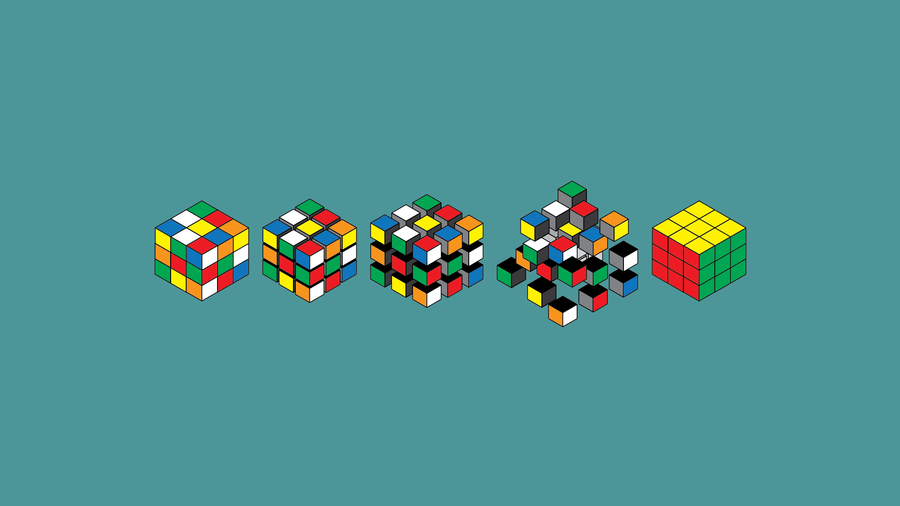The Rubik’s cube. Everyone’s tried to tackle the colourful puzzle but it seems to be impossible to solve. But that’s where you’re wrong. In this post I’m going to clear your mind of all prejudice about the cube and guide you to problem solve its solution.
The Rubik’s cube is a great way to show that every problem has a solution and that it’s sometimes much easier than you think.
The main reason the cube seems so impossible is because of the lack of information. As a child playing with the cube you quickly decide that it’s out of reach. But with the right algorithms, sequences of moves that take you from one state to another, you can traverse right through to the solution. You can compare it with any real life problem. Firstly, define what needs doing: Recognise the patterns on the cube. Then find a solution: Your brain recalls the correct algorithm. Finally, decide if your solution is viable, and execute it: Perform the moves on the cube. And so you’ve come closer to your goal.
You don’t need to be good at maths, you don’t need to have exceptional memory, and literally anybody could pick it up with a few days of practise and enough willpower. Some say solving it reduces stress but no one needs to prove how much satisfaction it brings.
Solve it!
You might think that just looking up a tutorial video on YouTube seems like cheating, that you need to work it out yourself. But the fact is that almost no one solves it on their own. Even if you do, chances are that your solution is probably not the most efficient and if you’re interested in entering the world of speedcubing (solving the cube as fast as possible, onto which I will get later) all that matters is speed. I’ll list some great resources that should get you geared up for speed below.
www.cubeskills.com (Guides made by the current world record holder for the fastest time)
defhacks.github.io/badmephisto-mirror (Mirror of a dead site)
Don’t worry if it seems like too much of a challenge at first. Take it step by step and you’ll get it after a few days.
Timers
Once you’re comfortable with the method, you can start timing how long it takes you to go from scrambled to solved. Obviously this doesn’t suit everyone, some cubers choose the casual route and just solve for either relaxation or as a mental challenge. Although you can just use your default phone timer there are many free online timers and apps available for an optimised experience. (Also, you don’t have to use the scrambles if you’re unfamiliar with notation.) Here’s a list:
Online timers:
- cstimer.net
- qqtimer.net
- timer.cubing.net
- quantumcube.io (in beta stages)
Apps:
- ChaoTimer (iOS, free)
- Twisty Timer (Android)
- FiveTimer (Android, paid)
Taking it further
Cubeskills.com has a good set of intermediate to advanced tutorials for when you’re really starting to get it. Feel free to start following them once your times go below the 2 minute mark.
Another interesting aspect of the cube is the international community of cubers. Competitions where you can test your speed against others are held regularly across the globe, and the results are posted onto an online database of rankings. You can see all of this here: www.worldcubeassociation.org
Speedcubing competitions are way less intense than you may imagine. Cubers of all ages and skill levels are welcome and the atmosphere is very casual. Don’t be afraid if it’s your first time, because competitors are always very welcoming of new cubers.
Once you learn the right strategies and algorithms, you can in effect problem solve any situation you come across. Even the Great Rubik’s cube


